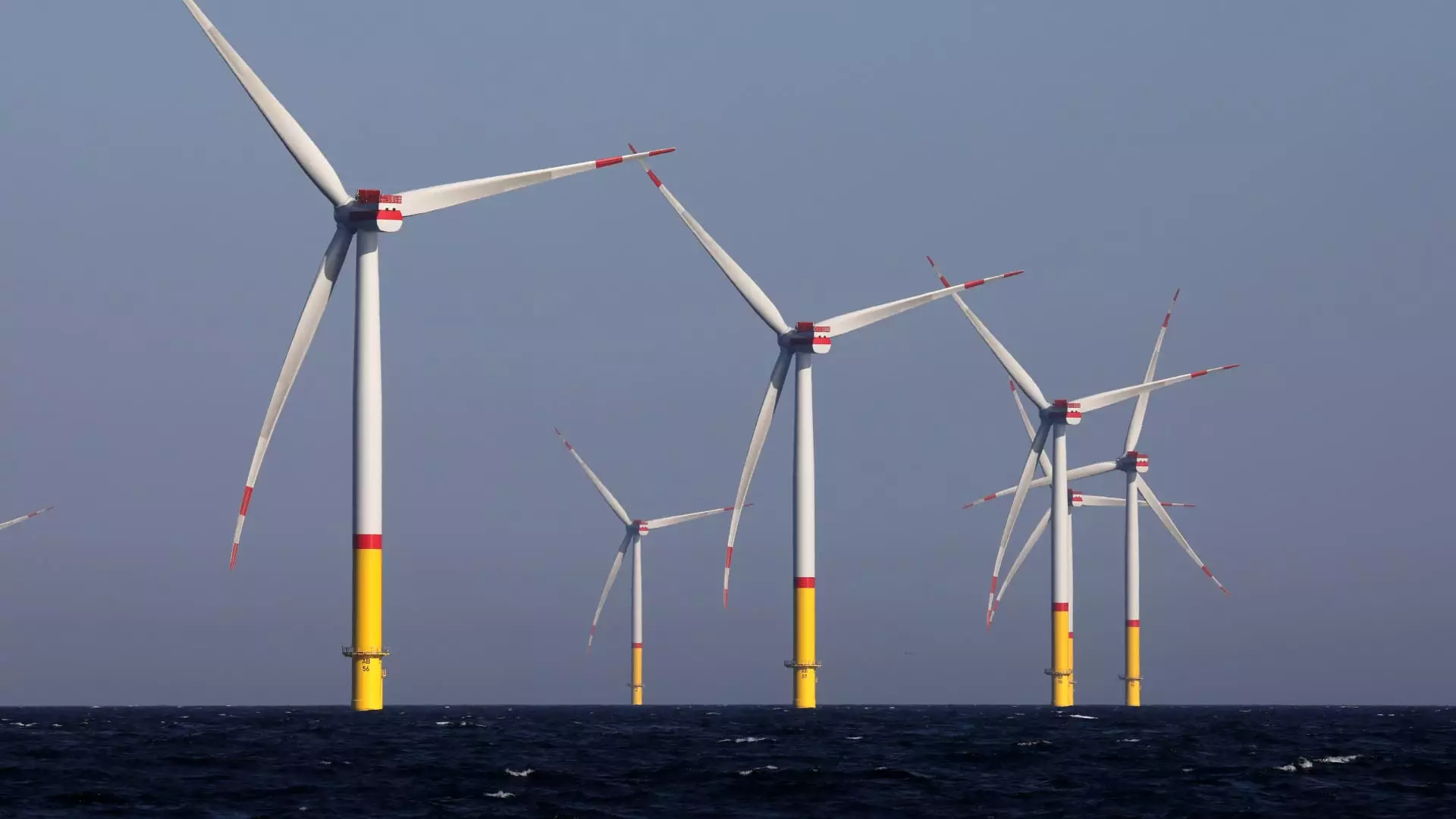The recent decision by Equinor to restart construction on its Empire Wind 1 offshore project symbolizes not just a momentum shift in energy policy but a clear repudiation of prior administration obstacles. This project, slated to be New York City’s first offshore wind farm, has weathered storms both literal and metaphoric. The lifting of the halt order imposed by the Trump administration marks a significant victory in the fight for renewable energy—a saga emblematic of the ongoing clash between progressive climate policy and antiquated political maneuvers.
Empire Wind 1 isn’t merely a construction project; it’s a manifestation of New York’s ambition to champion clean energy solutions and reduce dependency on fossil fuels. With the potential to produce 810 megawatts—enough to power half a million homes—this wind farm could redefine energy independence in one of America’s densest urban environments. Yet, the political landscape is perilous. The past administration’s obstruction of renewable projects under the guise of “analysis” and “consultation” reflects an ignorance to the urgent need for action. Doubling down on fossil fuels, they play into the hands of the oil and gas lobby while neglecting the dire consequences of climate change. This act also instigates fear among investors about the stability of energy policy under the current administration, demonstrating how fragile progress truly is.
Economics and Employment: The Tangible Benefits
New York Governor Kathy Hochul’s advocacy for the Empire Wind project shines a light on its economic implications. The affirmation of 1,500 union jobs connected to this renewable endeavor underlines a critical point: green energy isn’t just an ecological imperative; it’s an economic opportunity. In an era where the job market is fluctuating, particularly in post-pandemic recovery, Empire Wind 1 stands tall as a beacon of hope amidst uncertainty.
However, it’s crucial to navigate the rocky terrain of energy and job creation with a keen eye. While Hochul celebrates the project’s economic promise, the reality is laden with challenges. The paradox of supporting traditional industries while pushing forward renewable solutions is not easily reconciled. The administration’s commitment to work with private energy companies must avoid slipping into the territory of compromise on ambitious climate goals for the sake of short-term employment gains.
The Tug-of-War: Political Will vs. Environmental Responsibility
While the Biden administration offered an olive branch by approving this crucial project, it also highlights a more profound struggle within American politics—a tug-of-war between environmental responsibility and fossil fuel dependency. Interior Secretary Doug Burgum’s commentary touting “clean American natural gas” reveals a dangerous inconsistency in the narrative surrounding the transition to renewable energy. New York has historically resisted the influx of new natural gas pipelines, viewing them as steps backward in the fight against climate change. This begs the question: can a nation committed to green energy truly reconcile its reliance on natural gas, which is often touted as a ‘bridge fuel’?
Moreover, the historical rhetoric of former President Trump against wind energy brings us back to a grim reality. His administration’s attempts to obliterate offshore wind permits were indicative of a broader disdain for renewable initiatives. The astonishing frequency with which he has criticized wind power calls into question the credibility of any claims to support an energy-independent future. Leadership in clean energy space requires bold voices unafraid to challenge the status quo—something that the previous administration systematically dismantled.
Vision for a Sustainable Future: The Way Forward
As Equinor facilitates the construction of Empire Wind 1, it’s essential to maintain a progressive vision for New York’s energy future. The construction of this wind farm does not stand alone but rather as part of a growing movement nationwide to invest in renewable energy. With other projects like Revolution and Sunrise Wind on the Eastern Seaboard making progress, there lies an opportunity for a collective leap toward a sustainable energy grid.
Equinor’s investment of $2.5 billion in Empire Wind 1 highlights not only a commitment to renewable energy but also the corporate responsibility to lead in the fight against climate change. The energy sector must face the fact that consumer demand is shifting. They must prioritize sustainability over short-term profits. The path ahead will not be easy, but with projects like Empire Wind 1 setting a precedent, New York can emerge as a leader in the renewable energy movement, demonstrating that clean energy and economic progress are not mutually exclusive but rather intertwined destinies of the future.

